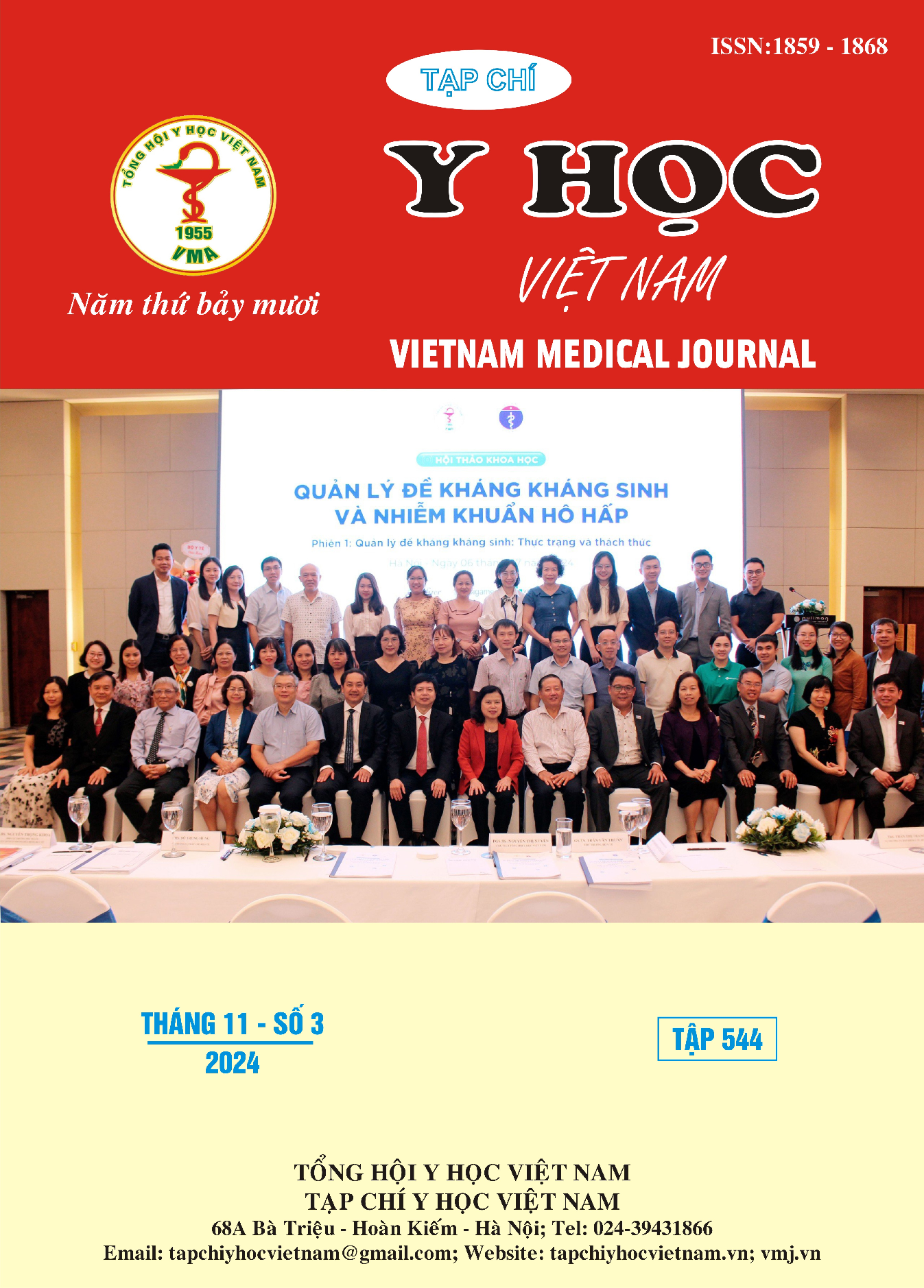SOME RISK FACTORS FOR HEMORRHAGE IN NEWBORNS AT THE PEDIATRIC CENTER - THAI NGUYEN NATIONAL HOSPITAL
Main Article Content
Abstract
Objectives: To identify risk factors associated with neonatal hemorrhage at the Pediatric Center – Thai Nguyen National Hospital. Subjects and methods: The study included 139 neonates with hemorrhage (case group) and 278 neonates without hemorrhage (control group). A case-control study was conducted, with the case and control groups matched for gender and age. Results: The rate of neonatal hemorrhage in males is higher than in females, mainly occurring in the first day after birth. Univariate analysis showed that factors increasing the risk of neonatal hemorrhage include: prematurity (OR=2.9, 95%CI:1.9-4.6), low birth weight (OR=2.2, 95%CI:1.5-2.4), asphyxia (OR=2.0, 95%CI:1.9-4.7), neonatal infection (OR=2.3, 95%CI:1.3-4.0), maternal gestational diabetes (OR=2.9, 95%CI=1.1-7.4), maternal hypertension (OR=7.1, 95%CI: 1.9-26.3). Multivariate analysis showed that preterm gestational age, infant asphyxia, neonatal infection, and maternal hypertension were independent factors increasing the risk of neonatal hemorrhage (p<0.05).
Article Details
Keywords
Neonatal hemorrhage, risk factors.
References
2. Strauss, T. et al. (2010), "Impaired platelet function in neonates born to mothers with diabetes or hypertension during pregnancy", Klin Padiatr. 222(3)(3), pp.154-157.
3. Bilal, M., Raj, B. & Shreyan (2016), "Maternal and neonatal factors causing thrombocytopenia in neonates admitted to NICU during 2013-2014", Int J Sci Res. 5(5).
4. Dwivedi, N. & Prashant, S (2024), "A study to compare the severity and outcome of neonatal bleeding and analysis of various causes of neonatal bleeding and their correlation with maternal factors", Journal of Cardiovascular Disease Research 15(7)(7), pp.2231-2239.
5. Maduhu, Z. I., Manji, K. P. & Mbise, R. L. (2002), "Perinatal risk factors for neonatal bleeding at the Muhimbili National Hospital Dar-es-salaam. Tanzania", Tanzania Medical Journal. 19(2), pp.13-16.
6. Narayan, S. et al. (1994), "Consumption Coagulopathy in Neonates Born to Mothers with Pregnancy Induced Hypertension", Indian Pediatrics. 31, pp.840-842.
7. Swarnim, S., Rai, B. K., Divya, M. & Kripanath, M (2017), "A prospective study of bleeding neonates: Clinical presentation, aetiological profile, immediate outcome and short term follow up", Current Pediatric Research. 21(3), pp.416-419.
8. Terrin, G. et al (2021), "Morbidity associated with patent ductus arteriosus in preterm newborns: a retrospective case-control study", Italian Journal of Pediatrics. 47(1), pp.9.


